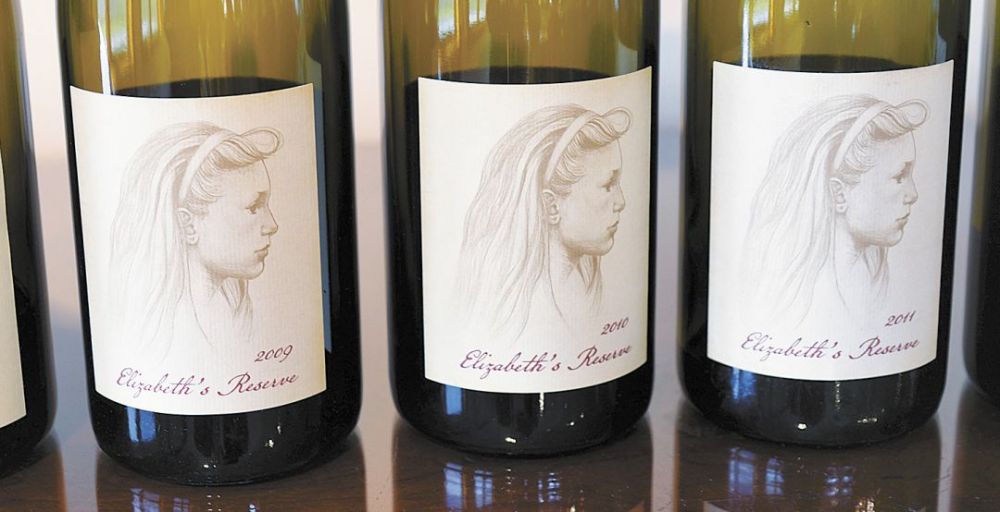Insider Sipping
Adelsheim shows insight into vintage variation
Understanding vintage influence and knowing whether to pour or store a bottle is challenging, but you don’t have to take a master class in winemaking for an insider view. This is why a group of wine enthusiasts recently met at Adelsheim Winery for a guided vertical tasting of Elizabeth’s Reserve Pinot Noir from 2008 to 2012.
Vintage Variation
Seasons impact the fruit produced. Springtime weather influences bud break and determines how much fruit a grapevine will produce that year. Summer heat and sun are required for ripening, while cool nights allow grapes to maintain acidity for balance. Fall rains at harvest sometimes rush winemakers to pick their grapes earlier than intended or leave them on the vine to ripen, risking possible disease or other damage.
Dave Paige, Adelsheim’s winemaker, cautions against drawing too straight a line from weather to final wine as there are many contributing components. “Conclusions about vintage can really only be drawn in hindsight.”
Knowing a little about vintage is interesting to the curious consumer, and the group used that advantage of hindsight to enhance the tasting experience. The warm vintage of 2009 expressed ripe fruit flavors, but the 2010s told a different story.
In 2010, bud break was earlier, ripening time was longer, harvest was later and the vintage overall cooler. The resulting wine had bright but not dominant fruit flavors. Descriptors around the table included spice, forest floor and earth before anyone listed fruit.
Some may remember the 2011 “miracle” vintage. The spring was warm and the grapevines were set to produce twice as much fruit as normal. The summer turned cool and cloudy with scarcely enough heat to ripen even a normal-sized crop. Luckily, an Indian summer and dry autumn extended the hang-time, saving the vintage. Still, the fruit of 2011 had less sugar and more acid than normal, resulting in lean, complex, elegant wines.
The 2012 vintage was easier for Oregon winemakers. The grapes enjoyed warm days, cool nights and a dry harvest. The result was perfectly ripe fruit. Oregon 2012 wines are already tasting fresh, rich and fruit-forward.
Adelsheim’s 2013 vintage has not been released. A warm summer came to a quick halt with a rainy, colder September followed by a dry October. The Adelsheim team picked some fruit before and after the rain. Paige claimed the differences in the juice were minimal, but the earlier picking showed greater acidity and the later even more balance and elegance. This is the best of both worlds for the winemaker who has the luxury of crafting a wine of great beauty.
Power of Blending
The winery’s Elizabeth’s Reserve is a Pinot Noir composed primarily of estate fruit supplemented with selections from a few favored Willamette Valley vineyards. Even though the vintages were very different, Elizabeth’s Reserve shines through with a “family resemblance.”
“It is the power of blending,” explains Paige. Because it is not a site-specific, single-vineyard Pinot Noir, Paige has more opportunity to blend juice from varying elevations, clones and soils for quality and desired style each vintage. Paige explains, “It is finding the overlap between celebrating the vintage and the goals for the finished wine.”
Pour or Store
Good things come to those who wait. The tasting also offered clues to how wine ages. Jillian Bradshaw, Adelsheim’s tasting room and hospitality manager, explained how wine changes in the bottle and predicted when each would peak.
Interestingly, the oldest vintage at the tasting was not deemed the most ready to drink. While the 2008 showed some development with dried fruit flavors, it would continue to improve; although the 2009 was “rich and ready.” The 2011, with lots of acid and less fruit, needs approximately seven years to soften and develop more complex flavors.
Because the 2012 was from a much riper vintage, this wine needs only three to five years; 2012 Oregon Pinot Noirs have basically been ready upon arrival. Of course, this is all palate-dependent and an individual drinker could find any of these wines to be ready now or later.
Finding Favorites
Keeping up with vintages or bottle development is not required to enjoy wine. Paige advises, “It is better to understand the producer than the vintage.” Find producers with the styles you like and trust them to make the best possible wine a vintage can offer.
Joining a wine club or simply establishing a relationship with a winery can open a wealth of knowledge. Instead of predicting when a vintage has peaked, call the winery for advice. Visit your favorite tasting rooms and give honest feedback; this allows the winery to understand your preferences, and to answer questions about vintage and cellaring on a level suited to your personal palate.













